Anthropology: Asking Questions About Human Origins, Diversity, and Culture 2nd Edition
Anthropology: Asking Questions About Human Origins, Diversity, and Culture Second Edition:
Anthropology 2nd Edition
This general anthropology text takes a holistic approach that emphasizes critical thinking, active learning, and applying anthropology to solve contemporary human problems. Building on the classical foundations of the discipline, Anthropology: Asking Questions About Human Origins, Diversity,
and Culture, Second Edition, shows students how anthropology is connected to such current topics as food, health and medicine, and the environment. Full of relevant examples and current topics–with a focus on contemporary problems and questions–the book demonstrates the diversity and dynamism of
anthropology today.
Additional ISBNs:
∗ eText ISBN: 0190057386, 978-0190057381, 9780190057381
- See additional information on the Amazon.
More Details
Cover
Title page
Copyright
Dedication
Brief Contents
Contents
Letter From the Authors
About the Authors
Preface
Acknowledgments
PART I: The Anthropological Perspective
1 Anthropology: Asking Questions About Humanity
How Did Anthropology Begin?
The Disruptions of Industrialization
The Theory of Evolution
Colonial Origins of Cultural Anthropology
Anthropology as a Global Discipline
What Do the Four Subfields of Anthropology Have in Common?
Culture
Cultural Relativism
Human Diversity
Change
Holism
How Do Anthropologists Know What They Know?
The Scientific Method in Anthropology
When Anthropology Is Not a Science: Interpreting Other Cultures
How Do Anthropologists Put Their Knowledge to Work in the World?
Applied and Practicing Anthropology: “The Fifth Subfield”?
Putting Anthropology to Work
What Ethical Obligations Do Anthropologists Have?
Do No Harm
Take Responsibility for Your Work
Share Your Findings
2 Culture: Giving Meaning to Human Lives
What Is Culture?
Elements of Culture
Defining Culture in This Book
If Culture Is Always Changing, Why Does It Feel So Stable?
Symbols
Values
Norms
Traditions
How Do Social Institutions Express Culture?
Culture and Social Institutions
American Culture Expressed Through Breakfast Cereals and Sexuality
Can Anybody Own Culture?
3 Human Biocultural Evolution: Emergence of the Biocultural Animal
Life Changes. But What Does It Mean To Say It Evolves?
A Brief Primer on the Rise of Evolutionary Thinking
Differentiating Evolution from Simple Change
What It Means to Have Common Ancestry
Why Evolution Is Important to Anthropology … and Anthropology to Evolution
What Are the Actual Mechanisms Through Which Evolution Occurs?
The Modern Synthesis
Basic Sources of Biological Change: Genes, DNA, and Cells
Genetic Mechanisms of Evolution
Non-Genetic Mechanisms of Evolution
How Do Biocultural Patterns Affect Evolution?
Human Inheritance Involves Multiple Systems
Evolutionary Processes Are Developmentally Open-Ended
The Importance of Constructivist Evolutionary Approaches for Biocultural Anthropology
Are Modern Humans Evolving, And Where Might We Be Headed?
The Impact of Disease on Evolution
Cultural Practices, Morphology, and Evolution
Looking to the Future
Global Population and Human Density
Genetic Manipulation
Adaptive Behavioral Patterns
4 Cross-Cultural Interactions: Understanding Culture and Globalization
Are Cross-Cultural Interactions All That New?
Is the Contemporary World Really Getting Smaller?
Defining Globalization
The World We Live In
What Are The Outcomes of Global Integration?
Colonialism and World Systems Theory
Cultures of Migration
Resistance at the Periphery
Globalizing and Localizing Identities
Doesn’t Everyone Want to Be Developed?
What Is Development?
Development Anthropology
Anthropology of Development
Change on Their Own Terms
If the World Is Not Becoming Homogenized, What Is Actually Happening?
Cultural Convergence Theories
Hybridization
PART II: Becoming Human
METHODS MEMO: How Do Anthropologists Study Human and Primate Biological Processes?
5 Living Primates: Comparing Monkeys, Apes, and Humans
What Does It Mean To Be a Primate, and Why Does It Matter to Anthropology?
What It Means To Be a Primate
The Distinctions Between Strepsirrhini and Haplorrhini
Primatology as Anthropology
What Are the Basic Patterns of Primate Behavioral Diversity, and Under What Conditions Did They Develop?
Common Behavior Patterns Among Primates
The Emergence of Primate Behavioral Diversity
How Do Behavior Patterns Among Monkeys and Apes Compare with Humans?
The Lives of Macaques
The Lives of Chimpanzees and Bonobos
So How Do They Compare to Us?
What Does Studying Monkeys and Apes Really Illustrate About Human Distinctiveness?
Primate Social Organization and Human Behavior
We Have Culture. Do They Too?
6 Ancestral Humans: Understanding the Human Family Tree
Who Are Our Earliest Possible Ancestors?
Our Earliest Ancestors Were Hominins
The Fossil Record of Hominins in Africa
The Three Hominin Genera
Who Is Our Most Direct Ancestor?
Possible Phylogenies, with Caveats
What Did Walking on Two Legs and Having Big Brains Mean for the Early Hominins?
The Benefits of Upright Movement
The Effects of Big Brains on Early Hominin Behavior
Who Were the First Humans, and Where Did They Live?
Introducing Homo erectus
The Emergence of Archaic Humans
Who Were the Neanderthals and Denisovans?
Anatomically Modern Humans Hit the Scene
How Do We Know If the First Humans Were Cultural Beings, and What Role Did Culture Play in Their Evolution?
The Emerging Cultural Capacity of H. erectus
Culture Among Archaic Humans
Social Cooperation and Symbolic Expression
7 Human Biodiversity Today: Understanding Our Differences and Similarities
In What Ways Do Contemporary Humans Vary Biologically?
Genetic Variation Within and Between Human Populations
Genetic Variation Is Tied to Gene Flow
Physiological Diversity and Blood Types
Disease Environments and Human Immunity
Why Do Human Bodies Look So Different Across the Planet?
Is Skin Really Colored?
Variations in Body Shape, Stature, and Size
Are Differences of Race Also Differences of Biology?
The Biological Meanings (and Meaninglessness) of “Human Races”
But Isn’t There Scientific Evidence for the Existence of Races?
What Biocultural Consequences Do Discrimination and Stress Have on Human Bodies?
Eugenics: A Weak Theory of Genetic Inheritance
The Embodied Consequences of Being a Racialized Minority
8 The Body: Biocultural Perspectives on Health and Illness
How Do Biological and Cultural Factors Shape Our Bodily Experiences?
Uniting Mind and Matter: A Biocultural Perspective
Culture and Mental Illness
What Do We Mean by Health and Illness?
The Individual Subjectivity of Illness
The “Sick Role”: The Social Expectations of Illness
How and Why Do Doctors and Other Health Practitioners Gain Social Authority?
The Disease–Illness Distinction: Professional and Popular Views of Sickness
The Medicalization of the Non-Medical
How Does Healing Happen?
Clinical Therapeutic Processes
Symbolic Therapeutic Processes
Social Support
Persuasion: The Placebo Effect
How Can Anthropology Help Us Address Global Health Problems?
Understanding Global Health Problems
Anthropological Contributions to Tackling the International HIV/AIDS Crisis
PART III: Humans and Their Material Worlds
METHODS MEMO: What Field Methods Do Archaeologists Use to Study the Human and Environmental Past?
9 Materiality: Constructing Social Relationships and Meanings with Things
Why Is the Ownership of Prehistoric Artifacts Such a Contentious Issue?
Archaeological Excavation and Questions of Ownership
Indian Reactions to Archaeological Excavations of Human Remains
Cultural Resource Management
How Should We Look at Objects Anthropologically?
The Many Dimensions of Objects
A Shiny New Bicycle in Multiple Dimensions
Constructing the Meaning of an Archaeological Artifact
How and Why Do the Meanings of Things Change over Time?
The Social Life of Things
Three Ways Objects Change over Time
How Archaeological Specimens Change Meaning over Time
What Role Does Material Culture Play in Constructing the Meaning of a Community’s Past?
Claiming the Past
The Politics of Archaeology
10 Early Agriculture and the Neolithic Revolution: Modifying the Environment to Satisfy Human Demands
How Important Was Hunting to Prehistoric Peoples?
Taking Stock of Living Hunter-Gatherers
“Man the Hunter”
Recent Attempts to Understand Prehistoric Hunting Strategies
Back to the Past: Understanding Prehistoric Hunter-Gatherers
Why Did People Start Domesticating Plants and Animals?
The Neolithic Revolution: The Beginnings of Food Production
The Hilly Flanks Hypothesis
The Pressure of Population Growth
Other Explanations for the Beginnings of Food Production
How Did Early Humans Raise Their Own Food?
Domesticating Plants
Domesticating Animals
Tending Tree Crops: Recent Findings on Arboriculture
What Impact Did Raising Plants and Animals Have on Other Aspects of Life?
Transhumance: Moving Herds with the Seasons
Sedentism and Growing Populations
11 The Rise and Decline of Cities and States: Understanding Social Complexity in Prehistory
What Does Social Complexity Mean to Archaeologists?
Population Growth and Settlement Practices
Trade and Contact with Peoples of Different Cultures
Specialization and Production Models
Does Complexity Always Imply Social Inequality?
How Can Archaeologists Identify Social Complexity from Archaeological Sites and Artifacts?
Identifying Social Complexity from Sites and Artifacts in Western Mexico
Population Growth and Settlement Patterns
Soils and Land Use
Monuments and Buildings
Mortuary Patterns and Skeletal Remains
Ceramic, Stone, and Metal Objects
How Do Archaeologists Explain Why Cities and States Fall Apart?
Rethinking Abandonment in the U.S. Southwest
The Transformation (Not Collapse) of the Classic Maya
PART IV: Human Social Relations and Their Meanings
METHODS MEMO: How Do Anthropologists Study the Relationship Between Language and Culture?
12 Linguistic Anthropology: Relating Language and Culture
Where Does Language Come From?
Evolutionary Perspectives on Language
Historical Linguistics: Studying Language Origins and Change
How Does Language Actually Work?
Descriptive Linguistics
Phonology: Sounds of Language
Morphology: Grammatical Categories
Sociolinguistics
Does Language Shape How We Experience the World?
The Sapir-Whorf Hypothesis
Hopi Notions of Time
Ethnoscience and Color Terms
Is the Sapir-Whorf Hypothesis Correct?
If Language Is Always Changing, Why Does It Seem So Stable?
Linguistic Change, Stability, and National Policy
Language Stability Parallels Cultural Stability
How Does Language Relate to Social Power and Inequality?
Language Ideology
Gendered Language Styles
Language and Social Status
Language and the Legacy of Colonialism
13 Economics: Working, Sharing, and Buying
Is Money Really the Measure of All Things?
Culture, Economics, and Value
The Neoclassical Perspective
The Substantivist–Formalist Debate
The Marxist Perspective
The Cultural Economics Perspective
How Does Culture Shape the Value and Meaning of Money?
The Types and Cultural Dimensions of Money
Money and the Distribution of Power
Why Is Gift Exchange Such an Important Part of All Societies?
Gift Exchange and Economy: Two Classic Approaches
Gift Exchange in Market-Based Economies
What Is the Point of Owning Things?
Cross-Cultural Perspectives on Property
Appropriation and Consumption
Does Capitalism Have Distinct Cultures?
Culture and Social Relations on Wall Street
Entrepreneurial Capitalism Among Malays
14 Sustainability: Environment and Foodways
Do All People See Nature in the Same Way?
The Human–Nature Divide?
The Cultural Landscape
How Do People Secure an Adequate, Meaningful, and Environmentally Sustainable Food Supply?
Modes of Subsistence
Food, Culture, and Meaning
How Does Non-Western Knowledge of Nature and Agriculture Relate to Science?
Ethnoscience
Traditional Ecological Knowledge
How Are Industrial Agriculture and Economic Globalization Linked to Increasing Environmental and Health Problems?
Population and Environment
Ecological Footprint
Industrial Foods, Sedentary Lives, and the Nutrition Transition
Anthropology Confronts Climate Change
Are Industrialized Western Societies the Only Ones to Conserve Nature?
Anthropogenic Landscapes
The Culture of Modern Nature Conservation
Environmentalism’s Alternative Paradigms
15 Power: Politics and Social Control
Does Every Society Have a Government?
The Idea of “Politics” and the Problem of Order
Structural-Functionalist Models of Political Stability
Neo-Evolutionary Models of Political Organization: Bands, Tribes, Chiefdoms, and States
Challenges to Traditional Political Anthropology
What Is Political Power?
Defining Political Power
Political Power Is Action Oriented
Political Power Is Structural
Political Power Is Gendered
Political Power in Non-State Societies
The Political Power of the Contemporary Nation-State
How Is Social Inequality Constructed and Upheld?
Race, Biology, and the “Natural” Order of Things
The Cultural Construction of Race
Saying Race Is Culturally Constructed Is Not Enough
Why Do Some Societies Seem More Violent Than Others?
What Is Violence?
Violence and Culture
Explaining the Rise of Violence in Our Contemporary World
How Do People Avoid Aggression, Brutality, and War?
What Disputes Are “About”
How People Manage Disputes
Is Restoring Harmony Always the Best Way?
16 Kinship and Gender: Sex, Power, and Control of Men and Women
What Are Families, and How Are They Structured in Different Societies?
Families, Ideal and Real
Nuclear and Extended Families
Kinship Terminologies
Cultural Patterns in Childrearing
How Families Control Power and Wealth
Why Do People Get Married?
Why People Get Married
Forms of Marriage
Sex, Love, and the Power of Families over Young Couples
How and Why Do Males and Females Differ?
Toward a Biocultural Perspective on Male and Female Differences
Beyond the Male–Female Dichotomy
Explaining Gender/Sex Inequality
What Does It Mean to Be Neither Male Nor Female?
Navajo N?dleehé
Indian Hijras
Is Human Sexuality Just a Matter of Being Straight or Queer?
Cultural Perspectives on Same-Sex Sexuality
Controlling Sexuality
17 Religion: Ritual and Belief
How Should We Understand Religion and Religious Beliefs?
Understanding Religion, Version 1.0: Edward B. Tylor and Belief in Spirits
Understanding Religion, Version 2.0: Anthony F. C. Wallace on Supernatural Beings, Powers, and Forces
Understanding Religion, Version 3.0: Religion as a System of Symbols
Understanding Religion, Version 4.0: Religion as a System of Social Action
Making Sense of the 2015 Terrorist Attacks in France: Charlie Hebdo
What Forms Does Religion Take?
Clan Spirits and Clan Identities in New Guinea
Totemism in North America
Shamanism and Ecstatic Religious Experiences
Ritual Symbols That Reinforce a Hierarchical Social Order
Polytheism and Monotheism in Ancient Societies
World Religions and Universal Understandings of the World
How Does Atheism Fit in the Discussion?
How Do Rituals Work?
Magical Thought in Non-Western Cultures
Sympathetic Magic: The Law of Similarity and the Law of Contagion
Magic in Western Societies
Rites of Passage and the Ritual Process
How Is Religion Linked to Political and Social Action?
The Rise of Fundamentalism
Understanding Fundamentalism
Epilogue: Anthropology and the Future of Human Diversity
Glossary
References
Photo Credits
Index




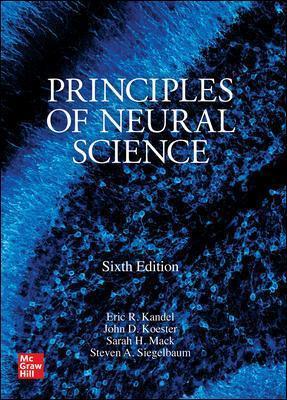

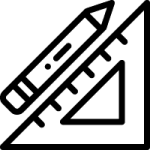
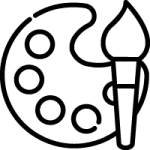

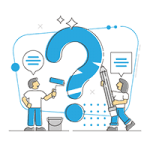
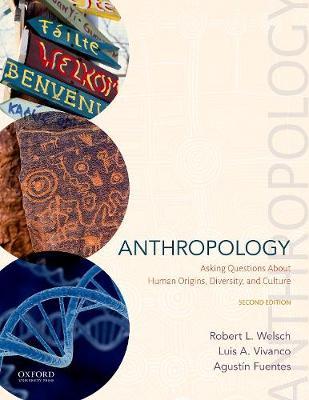

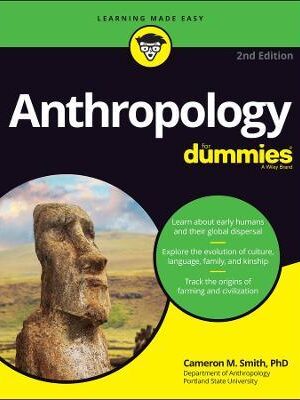



 Dentistry
Dentistry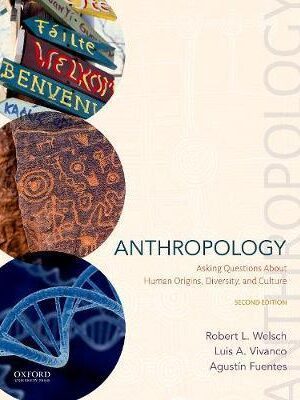
Reviews
There are no reviews yet.